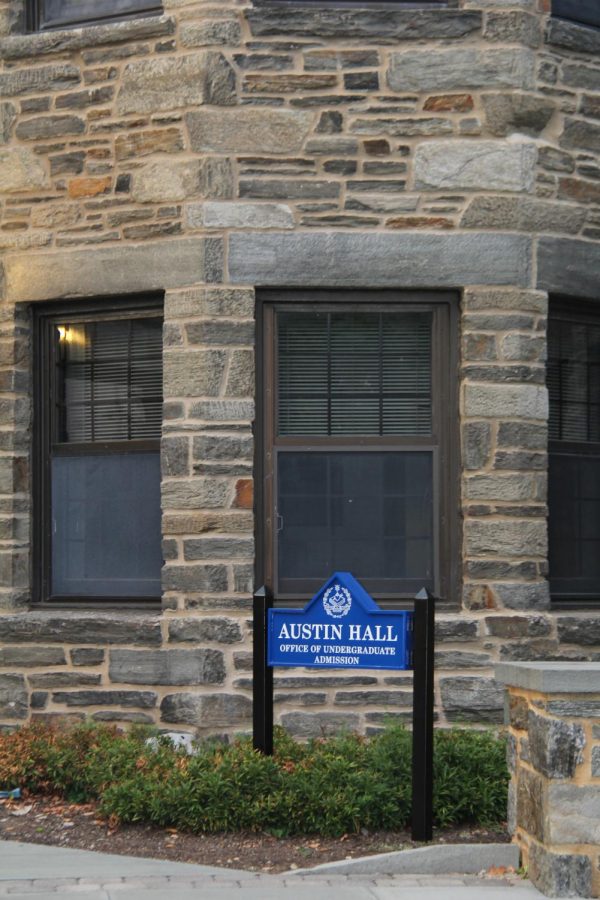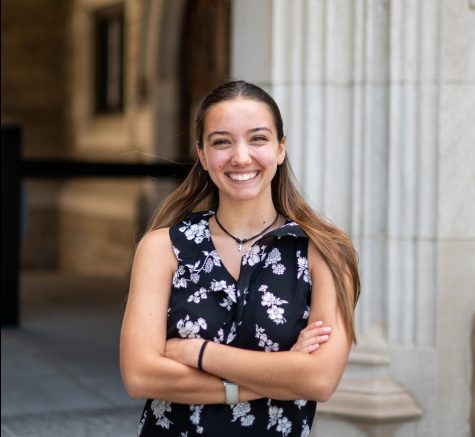What’s The Deal With Villanova Admissions?
Matthew Harris has been named Executive Director of Undergraduate Admission, following the tragic passing of former director Michael Gaynor.
September 7, 2022
It has never been “easy” to get into Villanova. But why is it that admissions rates have plummeted in the last decade?
In 2014, acceptance rates for undergraduate admission were close to 50%. But now, the Class of 2026’s acceptance rate has been more than halved, to 23%. Estimates say that this number will continue to decrease each year.
Over the last 10 years, goal class sizes have not changed and stay at around 1,700 students. The disproportionate increase in students applying and the stagnant target class sizes are the significant reasons acceptance rates have fallen. So the real question is, why are applicant sizes increasing?
The national reputation for Villanova has become increasingly significant, with academics at the forefront. It is most likely because the basketball team is making major strides in national championships, but culture is evolving on campus in other ways.
“After years of improving the Villanovan education and culture, Villanova has increased its range across the country and the world for its recruitment process,” sophomore Harrison Jenkins said. “Students from all different backgrounds, holding various beliefs and interests, are more inclined to apply to the university than ever before.”
Villanova has made epic strides toward being a campus that can host many faith groups and student opinions while still promoting Augustinian beliefs. Having the spaces, holding the discussions and creating an academically stimulating environment makes the campus distinguishably unified.
Seniors Alise Adornato and Sofia López-Somohano also expressed thoughts on the evolving culture.
“Applying to Villanova as an Early Action candidate who had never visited campus before, the idea of attending Villanova was somewhat distant,” Adornato said. “However, by the end of my college process and a quick visit for Early Candidates’ Weekend, the sense of community and service at Villanova struck me and ultimately made my decision clear.”
Service and community are the most defining factors in an accepted student attending Villanova.
“Over the years I’ve been at Villanova, I’ve seen how students, administration and even people outside of Villanova have realized how each student’s voice matters,” López-Somohano said. “I’ve seen this emphasis through campaigns like Let’s Vote Nova and the various new advocacy groups that have been created. A lot of strides towards acceptance and inclusion culture had been made, and there is still a lot more to come.”
López-Somohano leads Inclusion Week on campus, a time where students can learn about cultural identities and celebrate their peers, and is also involved in Special Olympics. She recognizes the changes that must still happen at Villanova regarding inclusion, but also the important steps the school and administration have taken.
“I also think it’s interesting that the steadily rising percentage of students of color is also speaking to Villanova’s movement to try and diversify the student body even though it still is very much a predominantly white institution,” said a Villanova alumnus, who wishes to remain anonymous.
The Class of 2026 had the highest student diversity to date, with 37% of students being students of color.
“If more students of color can have access to higher education spaces despite Villanova being a PWI, I would say any progress, even if it’s small, is progress headed in the right direction,” the anonymous alumnus said.
When speaking to people who have worked in Villanova admissions, there is one obvious thing that differentiates a Villanovan from other applicants: community outreach. Precisely 83% of accepted students in 2021-2022 were involved in community service in high school. Students can attest that this carries over, as there is a prominent reputation on campus to be a student for others, meaning that service is a priority. Admissions officers want meaningful service, not just a suitable application file.
“Villanova is selective but not unattainable,” Andy Halstead, Assistant Director of Admissions, said. “OUA will give thoughtful consideration to each aspect of the applicant’s application in its entirety and ensure that we are identifying candidates that clearly demonstrate the Augustinian characteristics of Veritas, Unitas and Caritas.”
Halstead also explained the competitive nature of each school within Villanova, such as CLAS and VSB.
Ultimately, admissions officers are not able to create one checklist for applicants.
“There is absolutely an element of unpredictability for us admission folk as we look to craft each first-year class at Villanova, which is simultaneously exhilarating and terrifying, but that is the fun of working with these extraordinarily talented, young people,” Halstead said. “What I can say with certainty is that, in the ever-shifting landscape of higher education, Villanova University remains on the radar of the most inspiring change-makers of the next generation — and that is something that keeps me in this profession and also proud to work for this institution.”
Villanova is constantly evolving, and it is changing quicker than ever. Some things stay still, but, there are things attached to the school that has changed to invite more applicants: inclusive spaces, competitive sports and a diversified student body.



